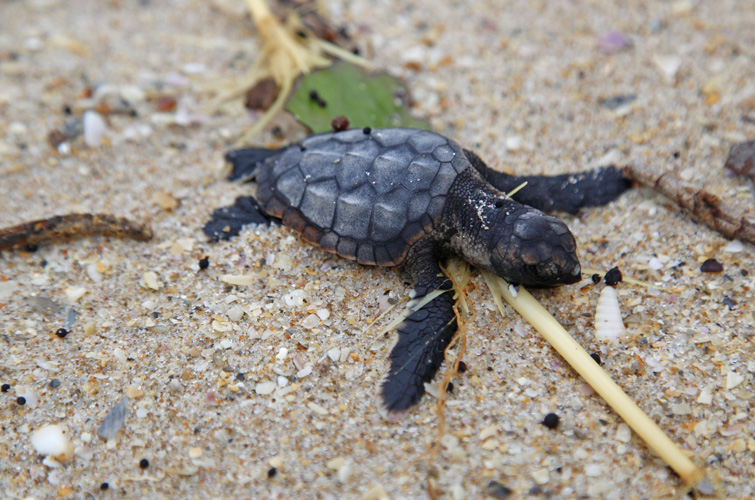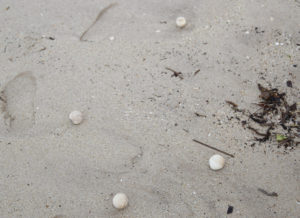
Vero Beach’s human residents and their homes were spared the worst of Hurricane Dorian’s pummeling winds and storm surge but many of the threatened and endangered sea turtles that nest on our beaches each year between March and November didn’t fare so well.

Hundreds of eggs were strewn down the beach just north of the Sebastian Inlet State Park Sept. 4, 2019 following hurricane Dorian. [Kaila Jones/ 32963]
County sea turtle coordinator Quintin Bergman says the storm swept through our area in the midst of a banner sea turtle nesting season. Prior to the storm, more than 6,100 loggerhead, 2,300 green and 37 leatherback nests had been counted.
Bergman said impacts on turtles and their nests are still being assessed, and he hopes to have an estimate this week or next of how many nests may have hatched before the hurricane and how many may have been lost.
The good news, Bergman said, is that “we didn’t lose all of our nests” and that green turtles have already laid new nests since Dorian exited east-central Florida waters.
“Nesting season is not over,” he emphasized. “We are expecting more green turtles to lay nests before the end of the season. If we’re lucky, we’ll have a couple hundred more nests, but we’ll let the turtles decide.”
Typically, Bergman said, leatherbacks are first to lay nests on our beaches, followed by loggerheads, with greens nesting latest. Greens, he said, deposit their egg clutches higher up on the beach than the other two species, so the incubating eggs might have been spared from much of the beach erosion caused by storm-driven waves. And not all nests have been counted. Besides the ones marked with stakes and caution tape, he said, some nests may be concealed near dune vegetation.



